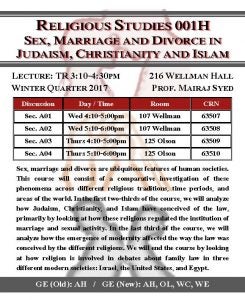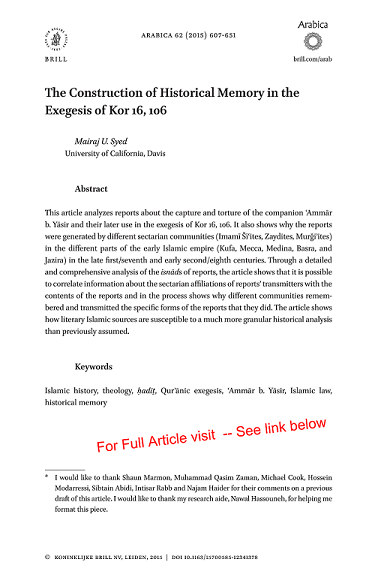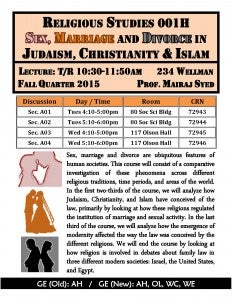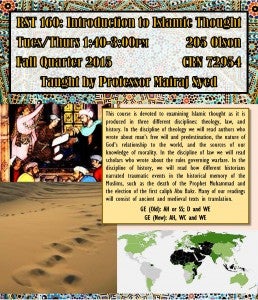1. Background Information on Hadith Literature
For the past one hundred years, scholars of early Islam have vociferously debated how to use the hadith literature as a historical source for the origins and early development of Islam. This literature is voluminous, consisting of hundreds of thousands of reports (hadiths) about the earliest figures and events of Islam, including Muhammad. Historians have faced obstacles in using hadiths as sources for early Islam because of the difficulties in determining the dates and provenances of such reports.
In the seventh century, reports about Muhammad and other important figures initially circulated orally and subsequently through a mixture of written and oral transmission. They began achieving stable written form in the eighth century and were gathered in collections beginning with the eighth and ninth centuries. These hadith books, selections from them, and individually floating hadiths continued to be handed down for many more centuries from teacher to student. The transmitters of these reports included a list of the names of the earlier transmitters who had transmitted them in succession (called the isnād) with each report. Thus, every text about the first century of Islam comes with a chain of names: the names of the persons who transmitted it in succession. For example here is a version of the famous five pillars hadith as recorded in Bukhari’s (d. 870) compilation:
‘Ubaydallah narrated to me that Hanzala reported to him from ‘Ikrima from Ibn ‘Umar that the Prophet said: Islam is built on five [pillars]: testifying that there is no god but God and that Muhammad is the messenger of God, establishing daily prayer, giving the charity tax, the pilgrimage, and fasting in Ramadan.
Given the fact that there are hundreds of thousands of hadith texts and that each of them comes with a list of its transmitters’ names (isnād), this literature is evidence of a vast social network oriented towards the preservation and dissemination of information. To our knowledge, it constitutes the largest precisely-documented instance of its kind in premodern history. It is a complex and highly structured literature, one in which a single narrative was often handed down in over a hundred versions, with each version having its own isnād. For example, one may find the five pillars hadith in a number of other sources. The following two versions are found in the compilations of Muslim (d. 875) and Tabarani (d. 971):
The version found in Muslim: al-Hamdani narrated to me that Abu Khalid narrated to me from Abu Malik from Sa’d from Ibn ‘Umar from the Prophet, who said: Islam is built on five [pillars]: God’s oneness, establishing daily prayer, giving the charity tax, fasting in Ramadan, and the pilgrimage.
The version found in Tabarani: Muhammad b. Ahmad narrated to me in Egypt, that his father narrated to him that Ash’ath narrated to him from ‘Abdullah from al-Sha’bi from Jarir from the Prophet: Islam is built on five [pillars]: testifying that there is no got but God, establishing prayer, giving the alms-tax, the pilgrimage to the holy house, and fasting in Ramadan.
Moreover, premodern scholars compiled biographical dictionaries that identified and assessed the tens of thousands of names that appear in these chains. There exist hundreds of works containing hundreds of thousands of reports and extensive biographical sources containing basic biographical information on tens of thousands of transmitters who passed down these reports. For example, the following is a translation of an entry on the narrator Hanzalah (who occurs in the first version of the five pillars hadith cited above), written by the tenth century scholar of hadith Ibn Hibban (d. 965) :
Hanzala ibn Abi Sufyan al-Jumahi al-Qurashi (belonged to Quraysh tribe) was an inhabitant of Mecca. He is known by the name of Abu Sufyan al-Aswad (the black Abu Sufyan). He transmitted hadith from Salim, Qasim, Nafi, Mujahid, Tawus. Al-Thawri, Waki’, and others narrated from him. He died in the year 151 (768). His mother was Bint ‘Amr b. Abi ‘Aqrab.
In the last couple of decades, this information has been digitized and made available either on-line in different websites or in software packages available for free on the internet. We have built our own customized database from these on-line digitized collections of hadith and biographies of transmitters. Our database currently contains basic biographical information on 49,845 unique transmitters and 628,237 hadith variants. It documents 4,280,472 individual instances of hadith transmission between teachers and students through 320,393 unique teacher-student relationships, covering nearly a millennium.
2. Goals of the Hadith Network Project
Yet, even after the digitization of hadiths and the biographical information on hadith transmitters, they remain woefully underutilized as sources of history for two reasons. First, the digitized information is not structured in a way that makes it conducive to academic research. Second, only, in the last couple of decades have historians developed new methods that can trace the origins and development of hadiths and date them. These methods are extremely time-intensive and therefore have been applied only to a few hadiths. These methods rely on manual techniques of collating, organizing, and synoptically comparing variant hadith texts and their isnāds, and manually diagramming them, in order to analyze and finally date them and determine the milieus in which they originated. We speak from our own extensive experience in dating hadith texts manually when we say that dating an individual hadith, when working diligently, can take months. With hadith variants numbering in the hundreds of thousands, it becomes quickly apparent that the existing manual methods are inadequate to the task of writing comprehensive studies of early Islamic society. Our project would programmatically perform most of the required operations and assign provisional points of origin to the hadiths based on the specific method used.
In addition to automating the dating of hadiths, our proposed project would undertake an extensive historical examination of the hadith network using the latest computational techniques available for the analysis of social networks. One example of the type of social network analysis that we propose is the application of PageRank and Betweenness Centrality algorithms to the network. Because of the magnitude of the hadith network (49,845 individuals with 4,280,472 instances of transmission between them), it is difficult to determine the most important transmitters manually. The application of social prominence metrics such as PageRank and Betweenness Centrality will algorithmically identify important transmitters based on their places in the structure of the network alone. A second example would involve employing community detection algorithms on the hadith network to discover the communities that sustained it over the centuries of its existence. This line of inquiry would identify the extent to which different cities, tribes, and sects became hubs for transmission activity over the history of the network, and it would identify the connections and overlaps among them.
Much of the above proposed network analysis is based purely on the shape of the network, which will help us learn about the relative importance of individual transmitters as well as particular circles of transmitters, cities, sects, and tribes. However, we are also going far beyond focusing on the sheer shape of the network by combining network information with the analysis of the texts that were devolving through the network. By combining the two, we will be able to reconstruct a text at various stages of transmission while it was in the hands of different transmitters, allowing us to date texts in their variant forms, pin down their geographic or tribal origins, and identify the persons who originated or transformed them. We will also be able to assess the transmission habits of individual transmitters on the basis of what they did to the texts they transmitted. We can also reconstruct the corpora of key transmitters and compare different transmitters’ corpora using stylometry and other automatic methods.




